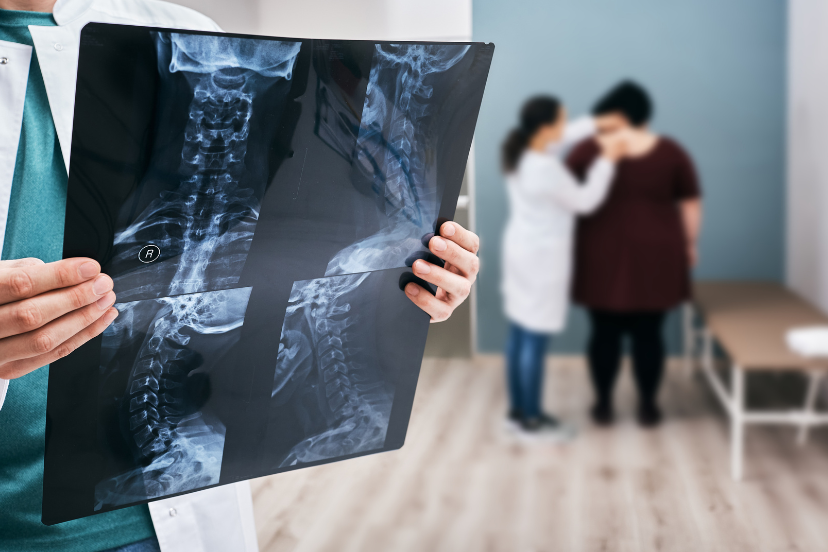USPSTF Osteoporosis Screening: Empowering Bone Resilience
Introduction
Welcome, dear reader, to a comprehensive exploration of a crucial aspect of preventive healthcare – the USPSTF Osteoporosis Screening. In this journey, we will delve into the significance, guidelines, and frequently asked questions surrounding osteoporosis screening, ensuring you’re armed with the knowledge to make informed decisions about your bone health.
What is USPSTF Osteoporosis Screening?
Understanding the Basics
In the realm of preventive care, the USPSTF (United States Preventive Services Task Force) plays a pivotal role. When it comes to osteoporosis, a condition characterized by weakened bones and increased fracture risk, the USPSTF Osteoporosis Screening is the beacon guiding healthcare providers and patients towards proactive bone health management.
Why Prioritize Osteoporosis Screening?
Securing Your Skeletal Future
In a world where prevention is often the best cure, osteoporosis screening emerges as a critical tool. By identifying bone density issues early on, individuals can adopt lifestyle changes, initiate treatments, and mitigate the potential impact of osteoporosis on their quality of life.
The Mechanics: How does USPSTF Osteoporosis Screening Work?
Decoding the Screening Process
USPSTF Osteoporosis Screening primarily involves bone density tests, such as Dual-Energy X-ray Absorptiometry (DEXA). These tests assess bone strength and mineral density, enabling healthcare professionals to gauge the risk of fractures and tailor interventions accordingly.
Who Should Undergo Osteoporosis Screening?
Narrowing Down the Candidates
While age and gender can influence susceptibility to osteoporosis, the USPSTF provides specific guidelines for screening. Women aged 65 and older and those with risk factors should undergo screening, ensuring timely detection and intervention.
Dispelling Myths: Common Misconceptions About Osteoporosis Screening
Separating Fact from Fiction
- Does Osteoporosis Only Affect the Elderly? Contrary to popular belief, osteoporosis can affect individuals of all ages, making screening essential for early detection and intervention.
- Is Osteoporosis Screening Painful? No, bone density tests are non-invasive and painless, involving minimal radiation exposure.
- Can Men Develop Osteoporosis? Absolutely. While women are more prone, men can also develop osteoporosis, emphasizing the need for inclusive screening guidelines.
- Is Osteoporosis Inevitable for Postmenopausal Women? No, proactive lifestyle choices and early screening can significantly reduce the risk of osteoporosis in postmenopausal women.
- Is Osteoporosis Screening Covered by Insurance? In many cases, insurance covers bone density tests, reinforcing the importance of preventive care.
- Do Lifestyle Choices Impact Osteoporosis Risk? Yes, factors like diet, exercise, and tobacco use can influence bone health, highlighting the importance of holistic wellness.
FAQs about USPSTF Osteoporosis Screening
1. What is the USPSTF, and why is it involved in osteoporosis screening?
The USPSTF is an independent panel of experts in prevention and evidence-based medicine. It evaluates the effectiveness of preventive services, including osteoporosis screening, to provide recommendations for healthcare professionals and the public.
2. At what age should individuals consider osteoporosis screening?
The USPSTF recommends routine screening for women aged 65 and older and earlier for those with specific risk factors, ensuring timely detection and intervention.
3. Are there alternative methods to Dual-Energy X-ray Absorptiometry (DEXA) for screening?
While DEXA is the gold standard, other methods like quantitative ultrasound may be used in certain cases, depending on availability and patient factors.
4. How frequently should one undergo osteoporosis screening?
The frequency of screening depends on individual risk factors. Consultation with a healthcare professional can determine the appropriate screening interval for each individual.
5. Can lifestyle changes alone improve bone density without medical intervention?
While lifestyle changes play a crucial role, individuals at risk may require medical intervention. A comprehensive approach, including both lifestyle modifications and medical guidance, is often the most effective.
6. Does the USPSTF provide guidelines for men undergoing osteoporosis screening?
Yes, the USPSTF recognizes that men can also be at risk for osteoporosis, especially with specific medical conditions or medications. Screening recommendations are not gender-exclusive.
Conclusion: Nurturing Bone Health Through USPSTF Osteoporosis Screening
In the intricate dance of preventive healthcare, USPSTF Osteoporosis Screening emerges as a choreographer, guiding individuals towards proactive measures to safeguard their skeletal well-being. Armed with knowledge, you can navigate the path of bone health with confidence, ensuring that your future remains as sturdy as the bones supporting you today.




